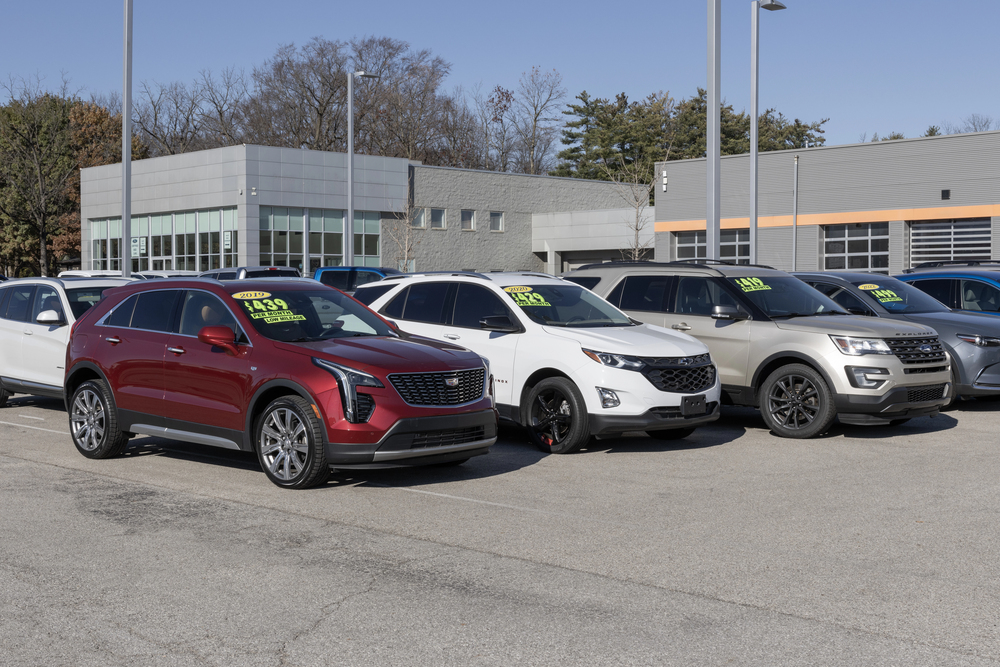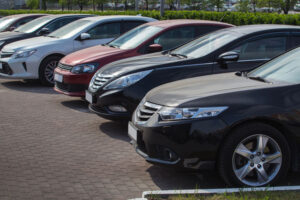The question many Tucson drivers are asking right now is simple: are used car prices going up in 2026, or will the market finally bring steady numbers after several unpredictable cycles? Our team at Car Time Supercenter has followed every shift in the market for decades, and the trends heading into 2026 show a mix of pressures, cooling periods, and renewed demand patterns that matter to anyone planning a purchase. These conditions shape how we adjust our inventory, talk with families about their budgets, and help buyers find the right time to make a move.
Used-car pricing has never been influenced by a single factor. Over the past few years, supply shortages, rising interest rates, and the high cost of new vehicles have pushed shoppers into the pre-owned market. Some segments saw sharp spikes. Others cooled quickly. As we enter 2026, the market does not look as strained as it once did, yet some signals point to potential increases in specific categories. Understanding those signals gives you a clearer picture of where the year is heading and how our experience can help you navigate a changing landscape.
A Look Back at Recent Pricing Pressure
To understand the direction of the year ahead, we should look at the conditions that shaped the used-car market from 2023 through 2025. During this period, the country faced the combined effect of limited new-car availability and high demand for affordable transportation. Used-car inventory dropped below historic averages nationwide. As a result, buyers competed for fewer vehicles, and prices climbed in almost every category.
By late 2024 and early 2025, supply began to rise again as new-car production recovered. This shift created a slow and steady cooling in wholesale pricing. Retail pricing, however, did not fall as quickly. Many dealers held cars longer than usual due to earlier high acquisition costs. Days-to-sell started dropping again in 2025. Buyers acted faster, and inventory moved at a pace we had not seen since before the pandemic.
Segment trends also became more pronounced. Pickup trucks saw notable increases in some regions, including the Southwest. Compact sedans and gas-efficient vehicles held strong value due to high fuel prices. Luxury SUVs softened in many markets as shoppers focused on long-term affordability. These uneven changes still influence how 2026 may unfold.
Why 2026 Feels Different From Recent Years
Heading into 2026, the used-car market stands at an interesting intersection. Inventory is healthier than it was a few years ago. Wholesale prices, in many cases, remain below their peak. At the same time, the strong cost of new vehicles continues to push budget-conscious drivers into the used segment. This balance sets the stage for a year marked by moderate changes rather than dramatic swings.
Interest rates remain an important factor. While they may not rise as sharply as they did in earlier years, many lenders still hold higher rates for pre-owned models than for new vehicles. Buyers are more cautious than they were before the pandemic. This caution affects the pace of purchases and plays a part in keeping prices from moving too quickly at the start of the year.
We have also seen a noticeable shift in buyer behavior. More shoppers compare the price gap between new and used models before making a decision. For some vehicles, a lightly used model sits close in price to a brand-new version, especially when incentives appear. In these cases, buyers often lean toward new cars. This keeps certain used-car prices from rising too fast. Yet in other categories, such as older vehicles with low ownership costs, demand remains high.
Segments Most Likely to See Price Increases
While not every part of the market is expected to rise, several segments show signs of upward pressure. Trucks continue to lead the way in many parts of the Southwest. Demand for reliable work vehicles and family-ready pickups keeps this category competitive. With many drivers avoiding the steep price tag of new trucks, pre-owned models hold strong appeal.
Affordable sedans may also see a modest increase. Many budget-focused buyers enter the used market looking for lower payments, and these vehicles often sell quickly. When days-to-sell drops for a category, prices tend to move up slightly to match demand.
Hybrids and fuel-efficient compact vehicles carry their own momentum. Energy costs remain unpredictable in many regions. Buyers seeking long-term savings watch these segments closely, and our own experience with Tucson shoppers supports the national trend. When more drivers chase the same type of vehicle, values stay firm or rise.
Segments That May Stay Flat or Decline
Not every category points upward. Luxury SUVs and electric vehicles may soften in 2026. Many buyers remain cautious about long-term maintenance costs or battery longevity. New EV incentives also influence demand, drawing some buyers away from pre-owned models.
Higher-mileage vehicles may not surge as strongly as they did in the early 2020s. The period of rapid price appreciation for older models has slowed. As supply becomes more balanced, the room for increases shrinks. Some parts of the market may even return to typical depreciation patterns after several years of unusual movement.
Large SUVs could remain steady as well. These vehicles carry higher running costs, and shoppers often compare fuel expenses before making a commitment. If fuel prices rise, demand may shift toward smaller or more efficient vehicles.
How Interest Rates Influence 2026 Pricing
Interest rates continue to play a major role in the used-car market. When financing becomes more expensive, buyers shift toward lower-priced models or delay purchases. This behavior tends to slow price increases. If rates moderate slightly by mid-year, demand may rise in the second half of 2026, putting upward pressure on prices across several segments.
Our own conversations with families in Tucson reflect this trend. Many buyers ask how to stretch their down payment, compare monthly payments, and weigh options that support long-term comfort. These concerns affect shopping patterns and influence how quickly used-car prices move throughout the year.
Lenders are also more selective in 2026 than they were before the pandemic. Programs exist for credit-challenged buyers, but they may involve higher costs. The relationship between financing conditions and buyer decision-making will remain one of the strongest forces shaping price trends this year.
Regional Factors That Shape Tucson’s Market
The Southwest has always carried its own character when it comes to used-car pricing. High demand for trucks, outdoor-ready SUVs, and fuel-efficient commuter vehicles drives movement throughout the year. Some national patterns apply here, yet local behavior often amplifies or softens these trends.
Work trucks, for example, tend to sell at a faster pace in Tucson than in some other parts of the country. Outdoor lifestyles and business needs support this demand. As a result, prices may rise faster for pickups here than in nationwide averages.
At the same time, Tucson drivers often keep vehicles longer than drivers in high-turnover markets. This means some segments stay steady because inventory does not flood the market all at once. Understanding these regional details helps us guide families toward the right timing and the right vehicle for their budget.
What Buyers Should Expect Throughout 2026
Based on current indicators, 2026 is unlikely to bring extreme swings in used-car pricing. Moderate increases across popular categories are possible, especially if interest rates ease and demand rises. Certain segments will remain strong from the start of the year. Others may soften slightly as inventory stabilizes.
For drivers planning to buy in 2026, timing matters. Early in the year may bring steady prices with slight increases in high-demand segments. Mid-year could shift based on financing trends. The end of the year may see more movement if new-car incentives change. Staying aware of these shifts helps you approach your purchase with confidence.
Our time in the Tucson market has shown us that the best decisions come from clear, honest information. That is why we follow every market report, compare data from multiple sources, and listen to what families in our community need. The answer to how this year unfolds depends on these combined insights.
Car Time Supercenter: A Tucson Team Focused on Your Journey
Our dealership has served Tucson families for more than four decades, and we take pride in making your vehicle search feel comfortable and familiar. We understand market trends because we live and work within the changes every day. Our experience guides buyers through each step, from early research to the moment they find the right car for their needs. If you want a team that cares about your confidence during a shifting market, we welcome you to explore your options with us and start a journey that feels right for you.

There are good reasons people will buy their next used car in Tucson from Car Time Supercenter. But I think we are one of the most trusted used car dealerships mainly because we treat everyone like family. My family has provided quality, dependable local used cars to Tucson customers since 1984, and I’m proud to be a part of our continued success.
Like many family-owned businesses, I grew up going to work with my dad. Falling in love with cars was natural because of my father’s passion, and eventually, I came to love the car business just like him. I officially joined the Car Time Supercenter team in 2012, starting in the finance department. Over the past decade, I’ve learned the used car business and how to treat customers from my family and industry resources.
Today, I oversee marketing, social media, inventory, and reconditioning, so I play an essential role in delivering local Tucson used car buyers the best experience possible. I also help our family business keep up with the times while providing old-fashioned customer service. From attending NADA classes to becoming Allstate certified for back-end products, I continue to learn and add skills to serve our customers better.




